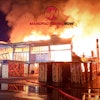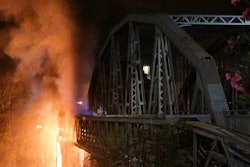
Fall is here but some manufacturing employees continue to work in extreme heat, with many relying only on fans and open doors for cooling. Parts of the country are still experiencing record-high temperatures. These workers, though not subject to the sun’s direct sunlight, can be subject to heat strain due to their own metabolic heat load, if magnified when the air temperatures are higher.
Without air movement it is more difficult to cool off, or if there is proper cooling, dehydration and heat cramps are possible if the employees are not provided adequate fluid replenishment and rest breaks. It’s crucial for managers and supervisors to gain a better understanding of the different types of issues and develop a plan to minimize the risks associated with working in hot conditions.
Doing this can help prevent injury, heat strain, heat stress, and other problems.To start, employers need to recognize the difference between heat stress and heat strain.
Heat stress includes a worker’s physical exertion to do the job and adjusting to environmental factors such as air temperature and humidity, air movement, work rest regimens, clothing worn and other personal employee variables. Heat strain is an individual’s physiological response to heat stress. Adverse heat strain, such as heat stroke, heat exhaustion and heat cramps, is what employees must avoid in order to prevent serious illness or death.
Managers and supervisors should be trained in recognizing and identifying ways to help prevent heat strain illnesses, and well-versed on the possible consequences of these heat stress variables.
Although the Occupational Safety and Health Administration (OSHA) does not have a heat stress standard, OSHA does recommend the use of the heat index as a screening tool. The heat index uses actual air temperature and relative humidity to measure an adjusted temperature of how hot it feels. OSHA and The National Institute of Occupational Safety and Health (NIOSH) have created a Heat Safety Tool app that is helpful in tracking the heat index. People should use caution, however, when using the heat index, as other factors may increase risk of heat-related illness.
For example, a heat index of less than 91 degrees Fahrenheit may be classified as low to moderate risk on the Heat Safety Tool, unless other factors such as direct sun, strenuous workload and little air movement are present. Since these other factors are all very possible in outdoor work situations, employers must be mindful of them.
Other tools to utilize include mainstream apps that give temperature, humidity, wind speed, sun and cloud information and barometric pressure. Protecting employees from heat stress requires incorporating several variables such as:
- Proper ventilation. With a large facility it may be difficult to ventilate the whole space, but big fans will help create air flow.
- Taking breaks. It may seem like less work will get done, but if exhaustion or other heat problems set it, no work will be able to get done.
- Ask how workers are feeling. Sometimes employees may not feel comfortable just approaching you with their problems. Keep their health in your top interests and ask them how they’re feeling.
- Know the signs of heat-related illnesses and take action. It is important that if something does happen to an employee, that you can recognize it and know how to react. Your employees should be trained to identify the symptoms in themselves and each other as well.
- Offer hydration stations/water coolers for your team. Heat can cause dehydration so offer water to prevent this.
- Encourage employees to take consideration when choosing their lunch options. Eating lunch with a high caloric count can affect the body negatively when working in extreme heat.
- Don’t forget normal safety routines. While taking extra precautions is great, don’t forget about the regular safety practices that keep workers healthy and safe every day.
Whereas the heat index only considers temperature and humidity, the wet bulb globe temperature (WBGT) adjusts the temperature for heat stress factors, including air movement, radiant heat and temperature. A calculator available through OSHA can allow you to adopt work/rest regimens for heat recovery by knowing WBGT and work type being conducted.
Acclimatization, or the gradual physiological process of adaptation to heat conditions involving sweating, heart rate, blood flow, and temperature regulation, needs to be looked at closely as it is not only extremely important, but it can be managed by employers. It’s also important to establish an acclimatization schedule for un-acclimated employees, both new and long-term. This can include adjusting work schedules to avoid the hottest part of the day and allowing for re-acclimatization after vacations and leaves of absence.
Heat safety for manufacturing workers shouldn’t ever be taken lightly. Employers need to look closely at the plans they have in place to help ensure their staff is safe and able to perform their jobs effectively.
Just because summer is over doesn’t mean heat is no longer a concern.
Guy Stevens is a Senior Loss Control Consultant at QBE North America.






















